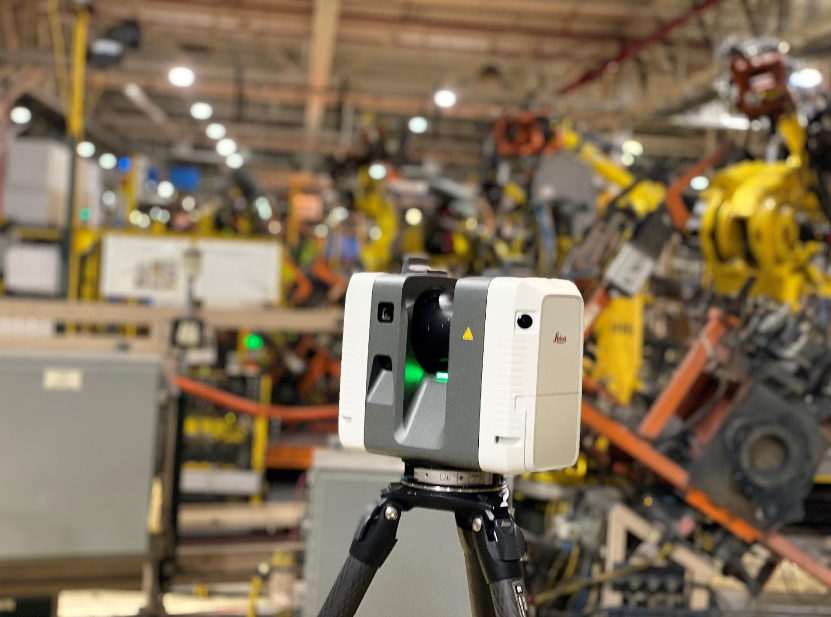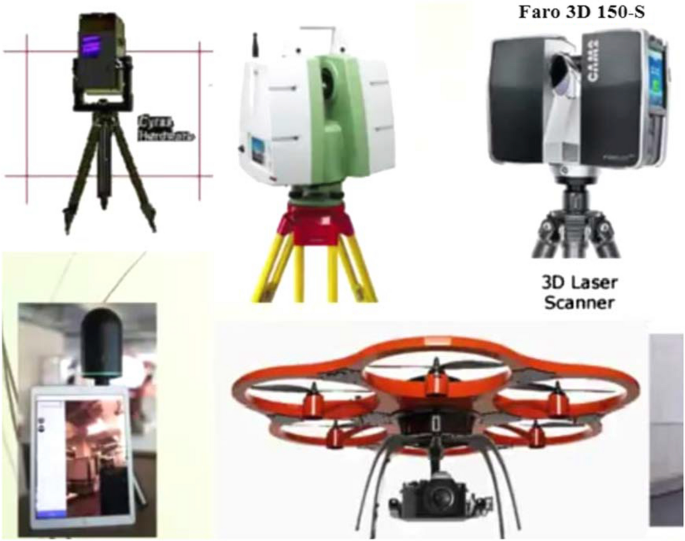Enhancing Manufacturing Processes: The Impact of 3D Laser Scanning on High Quality Control
3D laser scanning innovation is changing high quality control in production. By supplying exact dimensions and high-resolution information, it makes it possible for suppliers to recognize inconsistencies from specs easily. This improvement not only improves evaluation processes however also boosts functional effectiveness. 3D Scanning. Nevertheless, the implementation of this technology features its very own collection of difficulties. Exploring these facets exposes the broader effects for markets and the future landscape of manufacturing

Understanding 3D Laser Scanning Innovation
3D laser scanning innovation has progressed substantially in current years, its basic concept continues to be straightforward: capturing the accurate geometry of items utilizing laser beam of lights. This innovation uses laser light to gauge ranges in between the scanner and different factors on a things's surface area. The information accumulated is after that refined to produce an in-depth 3D design, precisely showing the dimensions and contours of the scanned object.
Usually, 3D laser scanners can be categorized into two main kinds: call and non-contact scanners. Call scanners physically touch the challenge gather measurements, whereas non-contact scanners make use of laser light beams to catch data from a range. The convenience of this modern technology enables its application across various sectors, consisting of style, production, and building and construction. Its capacity to create high-resolution designs facilitates quality assurance, reverse engineering, and rapid prototyping, inevitably enhancing layout accuracy and efficiency in manufacturing processes.
Advantages of 3D Laser Scanning in Manufacturing
As manufacturers seek to boost effectiveness and precision in their processes, the advantages of 3D laser scanning have come to be progressively evident. This cutting-edge innovation enables very precise and quick measurements of intricate geometries, significantly reducing the time needed for top quality checks. By recording comprehensive information, producers can recognize discrepancies early in the production procedure, thereby lessening waste and revamp costs.
In addition, 3D laser scanning helps with much better layout validation, allowing engineers to compare as-built problems with initial specifications. This capability guarantees that any type of inconsistencies are promptly dealt with, improving total item quality. On top of that, the innovation sustains the production of electronic doubles, which can be made use of for simulations and procedure optimizations. Consequently, manufacturers not only boost their functional performance yet additionally boost their affordable benefit on the market. In general, the combination of 3D laser scanning represents a transformative step towards accomplishing greater criteria in manufacturing quality assurance.
Assimilation of 3D Laser Scanning Into Top Quality Control
Integrating 3D laser scanning into quality assurance procedures improves the accuracy and efficiency of inspections throughout manufacturing. This modern technology enables producers to catch comprehensive, high-resolution data of assemblies and parts, enabling exact measurements and contrasts versus style specs. By employing 3D laser scanning, companies can recognize variances from tolerances more effectively, which is important for maintaining product integrity.

Real-World Applications and Situation Research Studies
Real-world applications of 3D laser scanning in producing demonstrate its transformative impact across various sectors. Aerospace firms utilize this modern technology to conduct specific assessments of components, ensuring they fulfill rigorous security standards. A notable case included a leading aircraft manufacturer that used 3D laser scanning to improve its quality control procedures, significantly decreasing inspection times and mistakes.
In the automobile field, makers have executed laser scanning to develop digital twins of their automobiles, enabling real-time changes during manufacturing. One automotive company reported a 30% reduction in rework prices after integrating this modern technology into their production line.
Furthermore, in the durable goods sector, companies are using 3D laser scanning for fast prototyping, allowing for quicker versions and enhanced product layouts. These applications highlight how 3D laser scanning not only boosts precision but likewise boosts efficiency and development throughout numerous manufacturing domains.
Getting Over Challenges in Application
Applying 3D laser scanning in manufacturing presents a number of difficulties that companies need to browse to fully realize its benefits. One considerable obstacle is the first price of equipment and software, which can discourage business from embracing this technology. Furthermore, integrating 3D laser scanning right into existing process calls for getting over resistance to transform amongst employees, necessitating complete training programs to assure proficiency. Data administration likewise positions a difficulty, as the high volume of info produced by 3D scanning should be efficiently processed and evaluated to obtain workable understandings. In addition, compatibility concerns with heritage systems might impede seamless integration, demanding possible upgrades or alterations. Resolving these obstacles is necessary for makers aiming to enhance quality assurance and enhance production procedures. By establishing clear techniques for training, investment, and information administration, companies can mitigate these barriers and release the transformative potential of 3D laser scanning in their operations.
Future Fads in 3D Laser Scanning for Manufacturing
As manufacturing remains to develop, the integration of 3D laser scanning with raised automation is expected to change production processes. Improved data analytics will play a crucial role in maximizing process and improving top quality control. These trends highlight the possibility for greater efficiency and precision in making atmospheres.

Raised Automation Assimilation
Although the integration of automation in manufacturing has been gradual, the future of 3D laser scanning is poised to accelerate this pattern significantly. As making procedures end up being progressively complicated, the need for exact, real-time measurements grows. 3D laser scanning innovation provides automated data capture, minimizing labor expenses and reducing human error. This integration allows manufacturers to streamline quality assurance procedures, making it possible for fast detection of discrepancies in production. Additionally, resource the placement of 3D laser scanning with robotics and automated systems facilitates smooth operations, enhancing overall performance. As makers embrace these advanced modern technologies, they can anticipate enhanced accuracy and performance, placing themselves competitively in a quickly evolving market. The harmony between automation and 3D laser scanning marks a substantial leap forward in making development.
Enhanced Information Analytics
The combination of automation has led the way for advancements in information analytics within the domain of 3D laser scanning. Suppliers are progressively leveraging innovative algorithms and artificial intelligence methods to analyze vast datasets created by laser scans. This improved information analytics capability enables real-time tracking of making processes, making it possible for the identification of flaws and discrepancies better than typical techniques. Anticipating analytics can foresee prospective concerns, substantially decreasing downtime and boosting overall effectiveness. The capability to envision information in three measurements provides deeper insights right into manufacturing operations, fostering better decision-making. As 3D laser scanning innovation proceeds to progress, the duty of data analytics will end up being significantly critical in driving development and preserving competitive advantage in manufacturing.
Often Asked Concerns
What Industries Advantage the Many From 3D Laser Scanning?
The markets that benefit most from 3D laser scanning include manufacturing, construction, aerospace, automotive, and health care. These markets use the technology for precision measurements, quality guarantee, and effective style processes, substantially boosting total functional effectiveness.
How Does 3D Laser Scanning Contrast to Typical Measurement Methods?
3D laser scanning offers greater precision and speed compared to typical dimension methods. It records in-depth geometries swiftly, decreasing human mistake and assisting in much better evaluation, which eventually enhances total quality assurance in various sectors.
What Is the Expense of Implementing 3D Laser Scanning Modern Technology?
The cost of implementing 3D laser scanning innovation differs significantly, generally varying from $10,000 to $100,000, depending on training, equipment, and software application. Organizations must evaluate these expenditures against prospective efficiency and high quality renovations.
Are There Certain Software Demands for 3D Laser Scanning?
Yes, 3D laser scanning calls for particular software program, consisting of data handling and modeling applications. Usual choices include CAD software program, point cloud processing tools, article and specialized applications that promote the integration and analysis of checked information for ideal results.
For how long Does a Typical 3D Laser Scanning Process Take?
A normal 3D laser scanning procedure can take anywhere from a couple of mins to several hours, depending on aspects like the dimension of the things, intricacy of the environment, and required level of detail for precision.
3D laser scanning modern technology is pop over here changing top quality control in production. 3D laser scanning technology has evolved considerably in recent years, its essential principle stays simple: recording the specific geometry of things making use of laser light beams. Incorporating 3D laser scanning right into top quality control procedures improves the precision and effectiveness of assessments throughout production (3D Scanning). 3D laser scanning innovation uses automated data capture, decreasing labor prices and reducing human error. The price of applying 3D laser scanning technology differs considerably, typically ranging from $10,000 to $100,000, depending on training, tools, and software